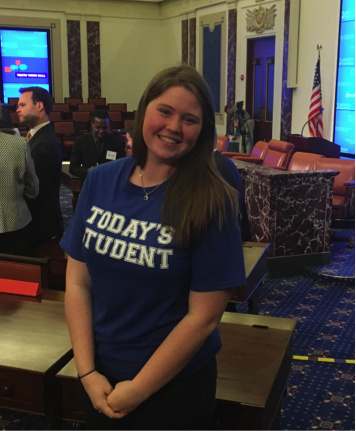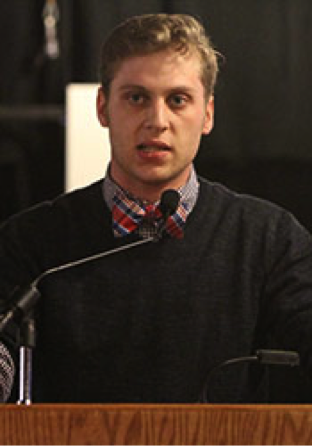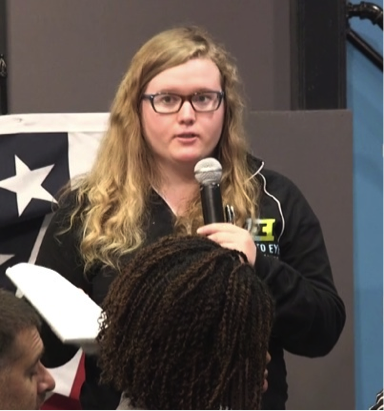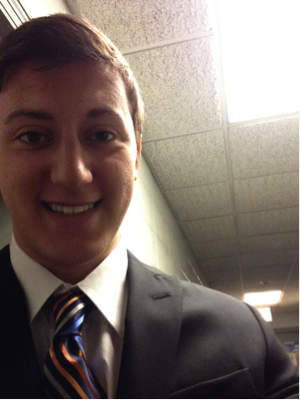
The following post was written by America Forward Manager Sarah Groh,.
This year, America Forward traveled across the nation to meet students striving to succeed in post-secondary. From Ohio to Pennsylvania to Nevada, we heard powerful stories of persistence and resilience.
Without a doubt, many of our assumptions about Today’s Students are wrong. Those striving to earn post-secondary degrees are more diverse than ever across every dimension. Many of the people that make up the current cohort of post-secondary students in this country are working full time, raising families, and starting college later in life. From first-generation students working to put themselves through school and worried about debt to grandparents entering post-secondary for the first time in their 60s – the students striving to access the American Dream through post-secondary come from all walks of life. This cohort could become the most nimble and resilient workforce we have ever seen in this nation, but only if we shift the way we think about practice and policy to meet them where they’re at.
In the months ahead, the next Administration and the 115th Congress will come to Washington with an opportunity to make a real difference for today’s students – an opportunity to address financial barriers, leverage community partnerships and consider the modest supports – like childcare and work-study – that can transform a family’s ability to strive to and through higher ed. Here at America Forward we believe that the best policy always begins with the voices of community members front and center. As the 115th Congress prepares to lead, we believe that spending some time with these seven students would help legislators on both sides of the aisle deeply understand who today’s students are.
Rob, Ohio
 Like many students, Rob saw college as a shot at opportunity and mobility. He has overcome significant financial barriers and instability to pursue a degree. He wants today’s elected officials to understand what those financial struggles are like for students. Rob emphasizes that students are often told their studies come first but it’s hard to focus on being a student if you don’t have a roof over your head or food in the pantry. Rob is a student organizer and advocate who volunteers with Young Invincibles and hopes the next Congress will consider policies that encourage higher education institutions to address the full range of supports students need and address barriers like food insecurity and housing instability, issues a growing number of students face.
Like many students, Rob saw college as a shot at opportunity and mobility. He has overcome significant financial barriers and instability to pursue a degree. He wants today’s elected officials to understand what those financial struggles are like for students. Rob emphasizes that students are often told their studies come first but it’s hard to focus on being a student if you don’t have a roof over your head or food in the pantry. Rob is a student organizer and advocate who volunteers with Young Invincibles and hopes the next Congress will consider policies that encourage higher education institutions to address the full range of supports students need and address barriers like food insecurity and housing instability, issues a growing number of students face.
Andre, Pennsylvania
A participant in a local YearUp program – which aims to provide young adults with the critical job skills and access to high-quality apprenticeships – Andre recognizes that many face systematic barriers accessing post-secondary. In particular, Andre believes colleges need to consider the responsibilities outside of the classroom that many students are balancing – particularly the realities of financially supporting yourself while in school. 42 percent of today’s first-year students live near or below the poverty line.
Kelly, Texas
 As she approaches graduation Kelly has her eyes set on a job in the non-profit sector, in particular working on issues in public health. Kelly attended Northeastern University where co-ops (relevant paid internships) are built right into the core required class structure. Kelly credits her co-op opportunities with both providing her with marketable job experience before graduation as well as financial support throughout school. She recognizes that for some students an earn while you learn approach like the co-op program can put post-secondary within reach.
As she approaches graduation Kelly has her eyes set on a job in the non-profit sector, in particular working on issues in public health. Kelly attended Northeastern University where co-ops (relevant paid internships) are built right into the core required class structure. Kelly credits her co-op opportunities with both providing her with marketable job experience before graduation as well as financial support throughout school. She recognizes that for some students an earn while you learn approach like the co-op program can put post-secondary within reach.
Gladys, Pennsylvania
A leader in the faith community, Gladys brings insight about the challenges she has faced as well as the barriers many of her parishioners have experienced accessing credentials. She has returned to school, pursuing a degree later in life with the support of Graduate! Philadelphia. A self-described ‘come-backer’ Gladys hopes the next Congress recognizes that near half of today’s students are older than 25 and many are balancing raising families and working full-time.
Courtney, NJ
 Struggling with a learning disability and multiple health challenges, Courtney has persisted and in currently enrolled in college. She has come face to face with some significant systemic barriers as she works towards her degree however. She is current pursuing her degree part time to balance work commitments, school and her health. At her institution part time credits actually cost more than full time credits, compounding the financial commitment she’s taking on. Courtney volunteers with a local Eye to Eye program working to break down stigma and provide supports to students with learning differences.
Struggling with a learning disability and multiple health challenges, Courtney has persisted and in currently enrolled in college. She has come face to face with some significant systemic barriers as she works towards her degree however. She is current pursuing her degree part time to balance work commitments, school and her health. At her institution part time credits actually cost more than full time credits, compounding the financial commitment she’s taking on. Courtney volunteers with a local Eye to Eye program working to break down stigma and provide supports to students with learning differences.
Michael Baldwin, Pennsylvania
The first in his family to go to college, Michael believes that we need to create more pathways to and through higher ed. Currently enrolled at Pierce College, Michael highlights that internships and access to programs like YearUp helped him realize possibilities beyond the poverty he experienced growing up and gain new skills that would help him navigate college and the job market.
Mason, Ohio
 Growing up in a small town in Appalachia, opportunities were limited. When Mason’s mother was diagnosed with cancer his family’s financial situation became precarious. He was able to obtain a scholarship that put higher ed within reach. Because of his personal experience and similar experiences he’s watched many others navigate, Mason believes that increasing access to scholarships and easy to navigate financial aid information should be a priority for both leaders in Washington and local colleges.
Growing up in a small town in Appalachia, opportunities were limited. When Mason’s mother was diagnosed with cancer his family’s financial situation became precarious. He was able to obtain a scholarship that put higher ed within reach. Because of his personal experience and similar experiences he’s watched many others navigate, Mason believes that increasing access to scholarships and easy to navigate financial aid information should be a priority for both leaders in Washington and local colleges.
Rob, Andre, Kelly, Gladys, Courtney, Michael and Mason each have a unique story but collectively they speak to the promise of today’s post-secondary students. We encourage policymakers to learn more about what the students in their districts are struggling with and the community partnerships and local organizations that are getting results. Modest shifts in the way we approach higher education policy could lead to breakthrough results for students across the country. The time is now to lead on policy to support all of today’s students.
For more about America Forward’s collective higher education priorities please see our Higher Education Platform and Workforce Development Platform. Also, follow us on Twitter, Facebook, and LinkedIn to get the latest updates on our engagement efforts.
Leave a Reply
You must be logged in to post a comment.